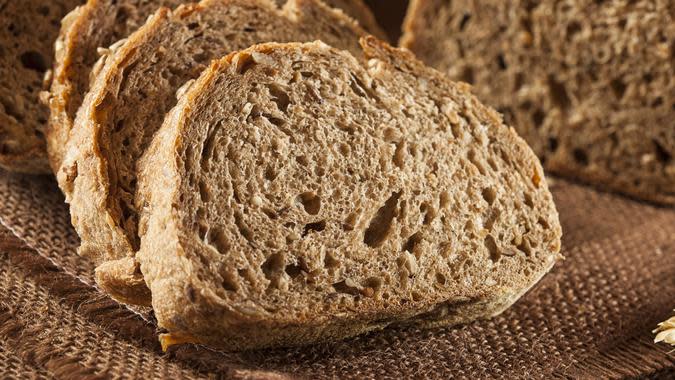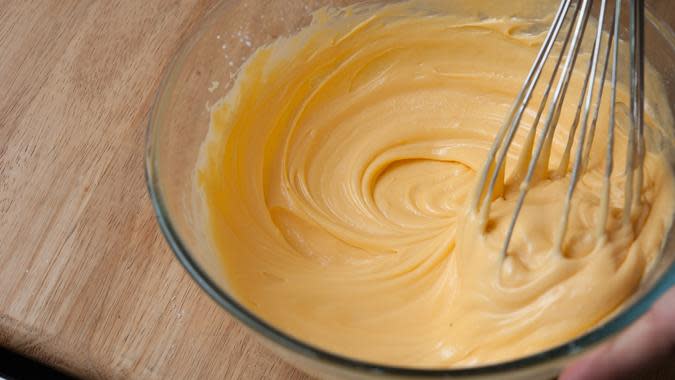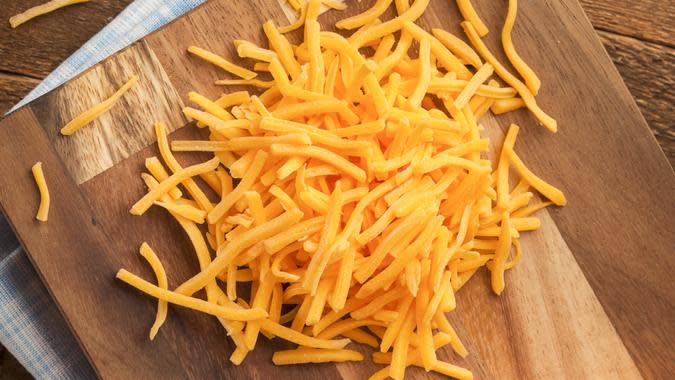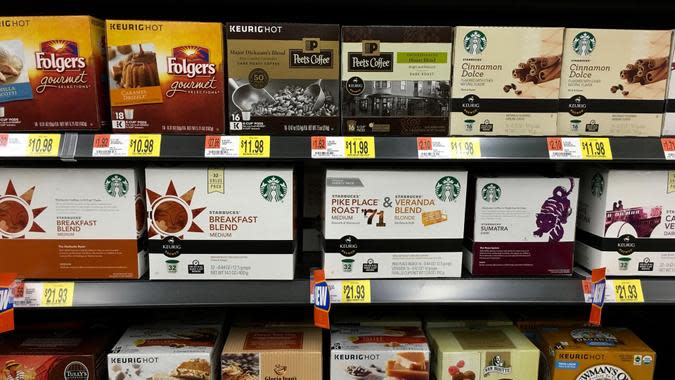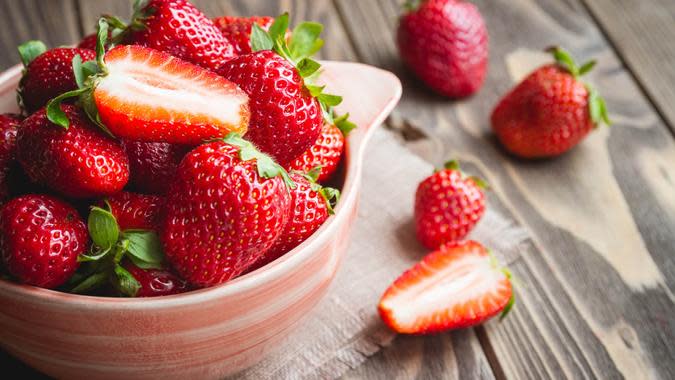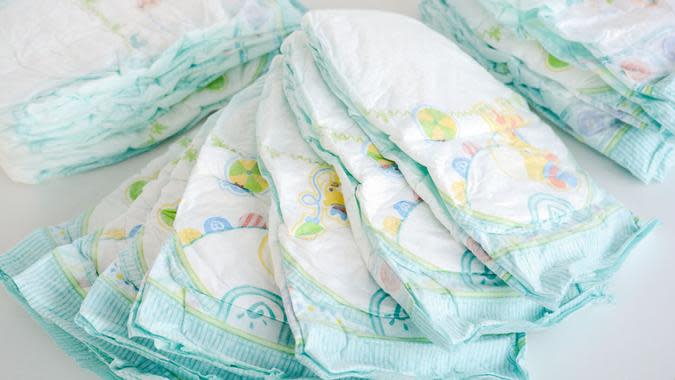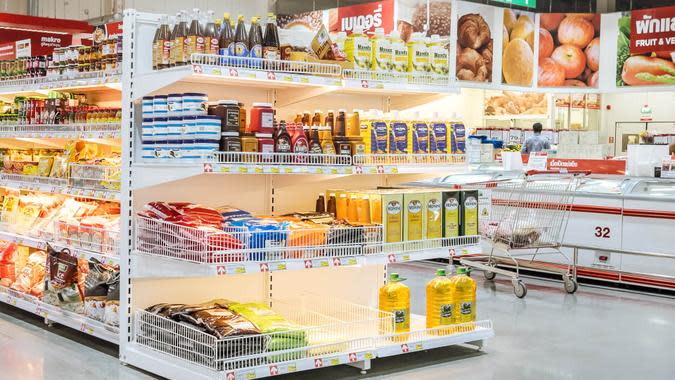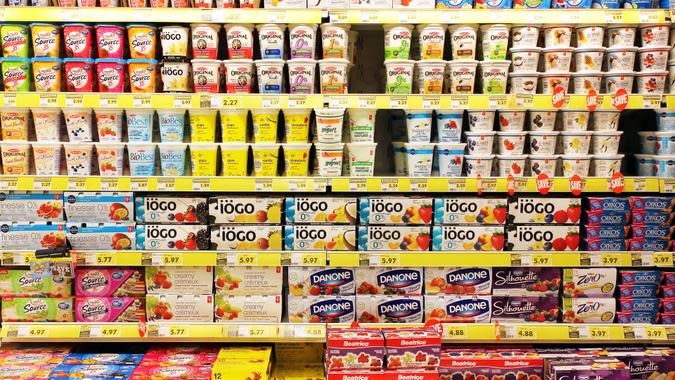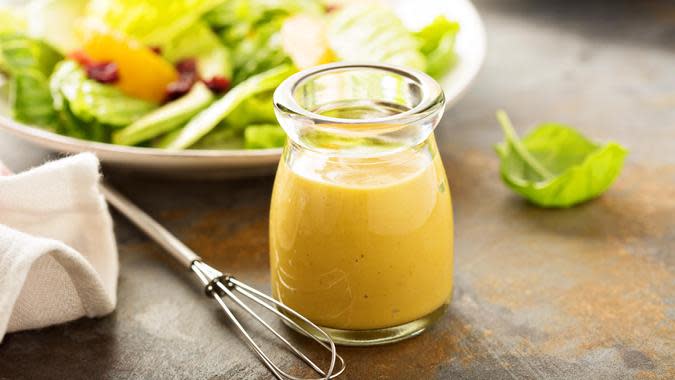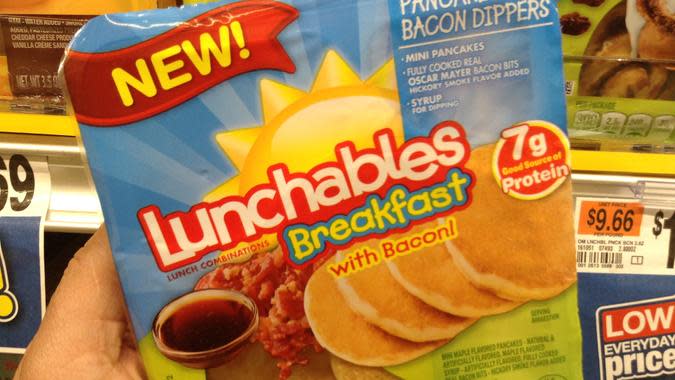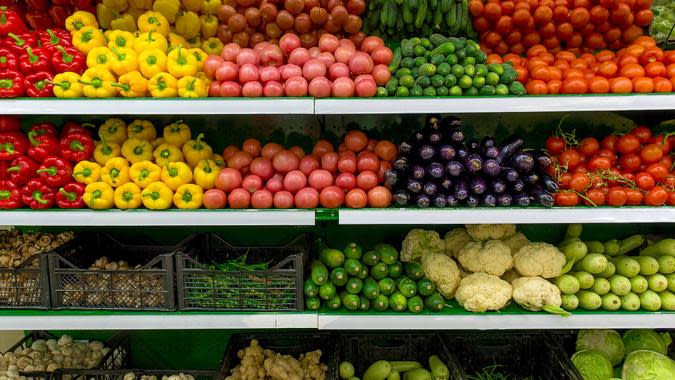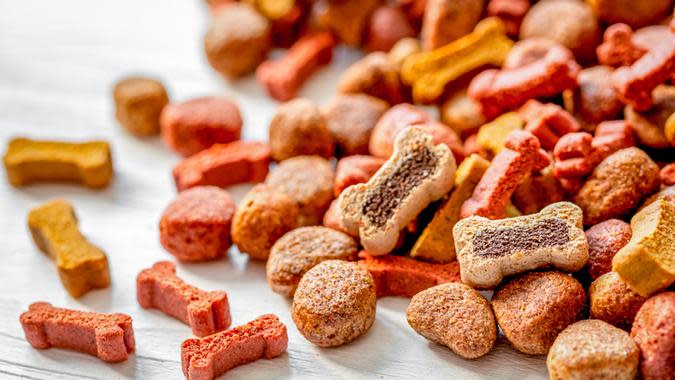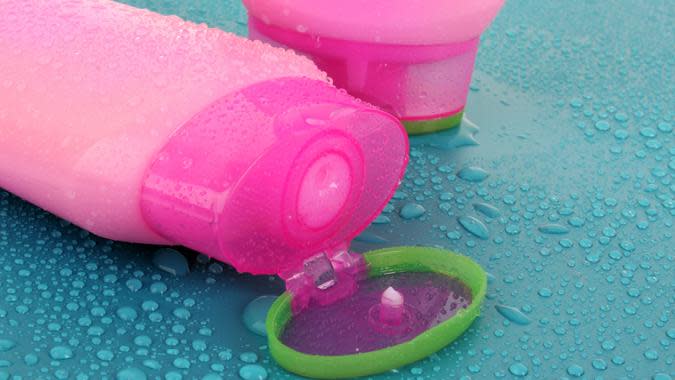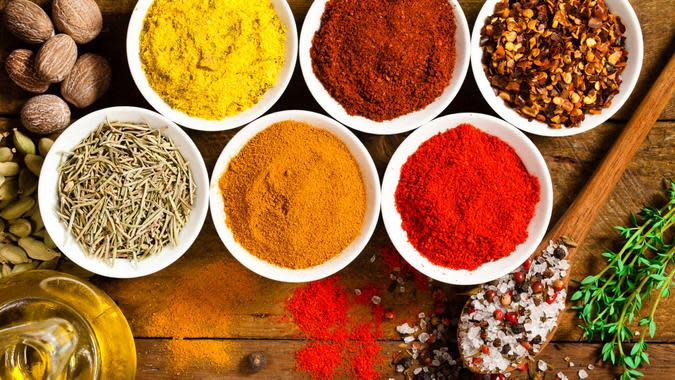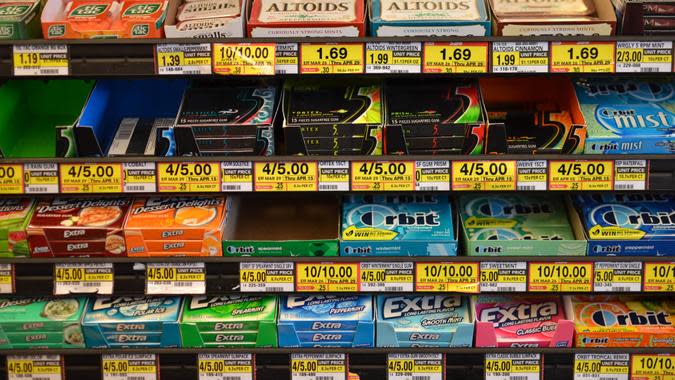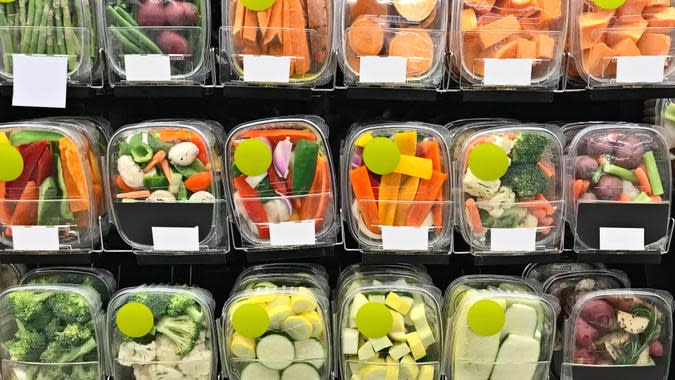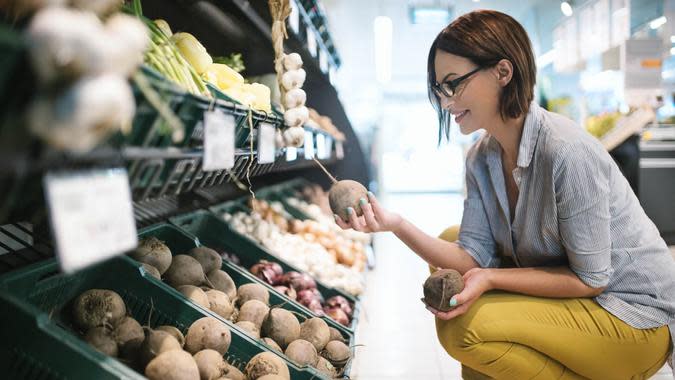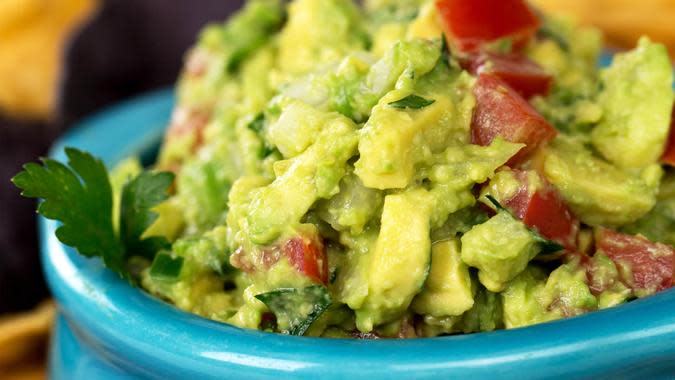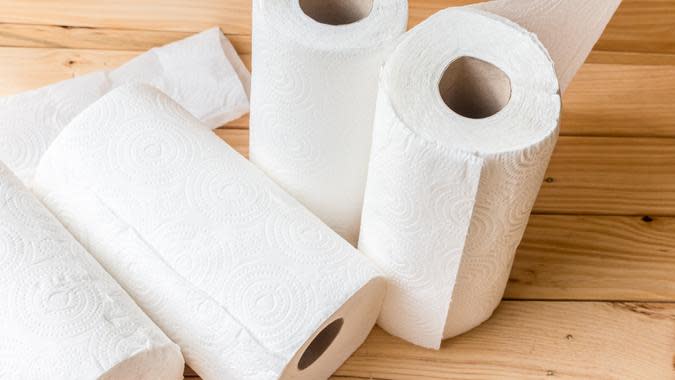39 supermarket buys that are a waste of money
Households across the nation have been pummeled by the pandemic and inflation, with many experiencing income loss and food insecurity.
Tips: 10 Things To Stop Buying in 2023
See: 3 Ways Smart People Save Money When Filing Their Taxes
Find Out: 11 Grocery Items To Buy at Dollar Tree
Fortunately, federal aid through programs like the Supplemental Nutrition Assistance Program (SNAP) are available, but these come with strict eligibility and purchase restrictions. At the end of the day, shoppers must get a bit creative in order to save money at checkout.
In addition to classic money-saving methods — like clipping and/or downloading coupons, sticking to a budgeted list, shopping seasonally and using a grocery store loyalty card — consumers looking to trim their grocery bill should consider a DIY approach. Many grocery store staples can be bought elsewhere or created in your own kitchen. And in many cases, you won’t only be saving money by getting crafty, you’ll also be packing in more nutritional value.
Here’s a look at 39 supermarket buys that you should skip if you want to save more money on groceries.
1. Baked Goods
Buying fresh-baked bread or cake while grocery shopping probably sounds (and smells) more appealing than going for a prepackaged solution. It’s also better for your wallet in the long run; you could be paying much more for artisanal bread and other baked goods that can be filled with preservatives, hydrogenated oil and high-fructose corn syrup.Investing in a bread machine (you can snag a top-rated one on Amazon for around $70), you can make a loaf for as little as 60 cents. Since home baking has surged in popularity during the pandemic lockdowns, you’ll find no shortage of inspiration and #bread community on social media.Take Our Poll: How Big of a Sign-Up Bonus Would It Take for You To Change Banks?
2. Baking Mix
A 40-ounce container of Bisquick Pancake & Baking Mix comes at a steep price for what is essentially flour, sugar, baking powder and salt. You might be paying up to 27 cents per ounce for ingredients like hydrogenated oil. Make your own by sifting together 6 cups of flour, 3 tablespoons of baking powder and a tablespoon of salt. Then work in 3/4 cup of shortening, and store the mix in a glass or ceramic canister.
3. Bottled Water
Buying bottled water has long been a trend in the U.S., and it’s one that is not only upsetting on an environmental level, given that plastic contributes to global warming and pollution, but on a personal finance level. Bottled water is roughly 3,000% more expensive per gallon than tap water. Unless you live in an area where tap water is not safe (you can look these details up on EWG’s Tap Water Database), buying bottled water is nothing but a waste of money and plastic.
4. Shredded Cheese
The convenience of cheese that is already shredded might not be worth it. Additives such as cellulose, an ingredient made from wood pulp, can sometimes serve as fillers and could potentially keep cheese that’s already shredded from performing the same as freshly shredded cheese in recipes. If you grate your own from a 16-ounce block, you’ll end up with a higher volume of grated cheese than you would get by buying a 16-ounce bag of shredded cheese.
5. Name-Brand Coffee
Pass by the coffee when buying groceries at the supermarket — it can be one of the most expensive places to get your morning grind. Head to a big-box supply or warehouse store and buy whole Arabica beans — they give that gourmet coffeehouse taste and are the main bean in most name-brand coffee blends. Grind them at home for freshness, and then use them in your French press, reusable K-Cup or regular brewer.
6. ‘Dirty Dozen’ Produce
Eating plenty of fruits and veggies is vital to good health, but sadly, these items can cost a small fortune. Rather than buying them at the supermarket, cut out the middleman by heading to your local farmer’s market where you can get the freshest produce — that is also guaranteed organic. You might also look into joining a Community Supported Agriculture (CSA), which will not only benefit your wallet, but will directly help farmers, too.
7. Diapers
Resist the urge to throw that pack of baby diapers into your cart because it’s a good grocery store deal; the mere price of convenience is a steep one. The real savings are at big-box stores such as Costco and Walmart — or if you really want to save — going the old-school cloth route.
8. Endcap Items
Just because something is on an endcap doesn’t make it a good buy. Although you might find items on sale there, know that some manufacturers pay money to the retailer to have a second display of their products. Venture down the aisle where the product is normally stocked and compare prices before choosing endcap items.
9. Energy Bars
Energy bars might be more nutritious than a candy bar, but they’re not exactly lean options. A chocolate brownie PowerBar has 21 grams of sugar and 330 calories, while a Snickers bar has 27 grams of sugar and 250 calories. Your best (and cheapest) bet is to buy nuts, dark chocolate chips and chopped dried fruit to make your own healthier snack mix.
10. Energy Drinks
If you want an energy boost, stick to a cup of coffee or green tea. A sleek and pricey energy drink can contain the same amount of caffeine as your standard cup of joe. For example, one 8.4-ounce Red Bull drink contains 80 milligrams of caffeine, around the same amount that a cup of coffee can have.
11. Eye-Level Items
Items at eye level are often more expensive than those on the bottom shelf. According to Consumer Reports, manufacturers pay retailers a fee for product placement at eye level.
12. Salad Dressing
You can top your healthy salad with a cheap salad dressing that might only cost a couple of bucks, but it also might contain preservatives you don’t necessarily want in your body. Healthier options can cost more depending on the store and brand. Making your own dressing is easy and cheap — and healthier — when you use fresh ingredients such as herbs, garlic and vinegar.
13. Frozen Veggie Dishes
Frozen vegetables can be an easy way to add healthy ingredients to your meal while making sure nothing goes to waste in the fridge, but you’re paying a ton for the convenience. It’s far more cost-effective to make your own gourmet veggie dishes. Coat chopped veggies in olive oil, sprinkle on some salt and cook them in an oven at 425 degrees. Freeze them in a single layer on a baking sheet until they’re set before storing them in a freezer container.
14. Frozen French Fries
If you don’t mind waiting an extra 10 to 15 minutes, you can make your own french fries by slicing a potato lengthwise into french fry shapes, coating the fries with oil and popping them into a 425-degree oven. You can also go the sweet potato route for some added nutrients.
15. Lunch Snack Packs
Kids might love snack packs, but buying Lunchables and other packaged meals are always pricier than going the DIY route. Rather than paying for a 3.1-ounce molded plastic dish that usually contains a handful of crackers, cheese slices and processed meat, let your child pick out a reusable sectioned plastic container at a dollar store and prep a healthier version together for much less per serving.
16. Organic Produce
A steep price tag isn’t the only difference you’ll notice when buying organic produce at your local supermarket. The fruits and veggies might look withered or pale unless your grocer does a lot of organic business. Shop at stores that sell organic produce regularly, such as Whole Foods or Aldi, and you’ll spend money on food that looks better and lasts longer. You can also buy organic local from a farmers market.
17. Pet Food
Buying pet food at the grocery store might not always be a good idea, depending on the brand. Some of the brands at supermarkets list corn — a cheap filler — as one of the first ingredients, along with cheap byproducts that are made from beaks, intestines and other parts. Head to Costco or Tractor Supply for pet food made with premium ingredients for about the same cost.
18. Toiletries and Cosmetics
It might be convenient to pick up a bottle of shampoo or face scrub while you’re at the grocery store, but there might be better options available. Cosmetics aisles at the grocery store can offer lower-end products formulated with potentially harmful parabens. You might be better off ordering quality products online or buying them at a department store.
19. Gourmet Ice Cream
Instead of paying higher prices for gourmet ice cream, such as Ben & Jerry’s, make your own delicious treat with the generic brand. Spice it up by adding chopped cookies, candy bars and other sweets from a dollar store to make your own special mix.
20. Marinara Sauce
A 24-ounce container of marinara sauce is almost always costlier — and more packed with preservatives — than a 28-ounce can of crushed tomatoes. Make a quick pan sauce for dipping focaccia or topping on pasta by adding garlic, Italian seasoning, olive oil, salt, pepper and a sprinkle of cayenne to taste.
21. Spices
You may only need a pinch of spice for any given recipe, but buying it in bulk is the most cost-effective way to get it. Head to Whole Foods or other stores where spices are sold in bulk and buy just the amount you need for a whole lot less.
22. Checkout Impulse Buys
You’ve made it through the store with just the products on your list: Don’t blow it on that pack of Orbit gum while you’re at the checkout. The checkout line is where candy and other treats get placed to tempt you to buy them when you’re fatigued and bored. Don’t fall for this age-old trick. If you need gum, head back to the candy section and buy it in bulk.
23. Precut Vegetables and Fruits
You’ll always pay more for the precut version of a vegetable or fruit than the raw version. Save yourself the money and do the dicing yourself.
24. Precut Meats
Meat is already pricier than ever thanks to the closure and/or slowing down of major processing facilities amid the pandemic. By purchasing it precut, you’re paying even more for the sheer convenience. If you must sate your carnivorous urge, do the cutting yourself.
25. Out-of-Season Produce
Produce that’s out of season tends to cost more since it’s harder to come by. Instead, opt for in-season produce or, if you have to have it, the frozen version of the out-of-season fruit or vegetable you’re craving.
26. Preportioned Snack Bags
Preportioned snack bags can be convenient for packing lunches or just keeping your portions in check, but you pay a premium price for the luxury. You’re better off buying the bigger bag and portioning it out into reusable snack bags.
27. Canned Beans
You’ll pay more for canned beans than you would if you purchased them dry and soaked them yourself. Dry beans are also healthier as they typically don’t contain sodium, whereas canned beans tend to be high in salt.
28. Flower Bouquets
Flower bouquets sold at grocery stores are not always the freshest, so they can wilt faster than those purchased at a florist, Woman’s Day reported. Plus, they are usually filled with lots of greenery to make them look like you’re getting more flowers than you actually are for the price.
29. Cleaning Supplies
Grocery stores tend to charge more for cleaning supplies than big-box stores.You can also skip purchasing cleaning products altogether and DIY your own cleaning spray with supplies you probably already have in your pantry. Simply mix together 1/2 cup distilled white wine vinegar and 1/2 cup of water, plus lemon or your favorite essential oil if you want it to be scented.
30. Kitchen Utensils
When you’re picking up baking ingredients, you’re faced with lots of shiny new supplies that you could be tempted to add to your cart in the same aisle. However, kitchen utensils and baking tools will be more expensive at grocery stores than elsewhere. You’re better off purchasing these items at stores like Target, Walmart or HomeGoods, Woman’s Day reported.
31. Greeting Cards
You should never pay full price for greeting cards — but you typically have to when you purchase them at the grocery store. Instead, stock up on cards at a dollar store or discount stores like HomeGoods.
32. Batteries
Batteries are often placed at endcaps and at the checkout line, so they’re an item you could be tempted to grab. But you’ll get a better price if you buy them at a warehouse store or on Amazon.
33. Guacamole, Hummus and Salsa
As with salad dressings, these dips are better to DIY. You’ll avoid the chemical additives, preservatives and extra calories that come with the prepackaged versions when you prepare them yourself, and they’re all pretty easy to make at home.
34. Storage Containers
The grocery store is not the best place to stock up on new food storage containers — you could end up paying double what you would at a big-box store like Target.
35. Napkins, Paper Towels and Toilet Paper
Toilet paper became a hotly in-demand item when the pandemic first put many cities and states on lockdown, creating a national shortage. If you have no choice, by all means buy your toilet paper from the grocery store, but always check big-box stores for this and other paper goods such as paper towels and napkins. You’ll stand to save by buying in bulk — and be less traumatized should another shortage happen.
36. Vitamins
Vitamins are another item that’s a rip-off at most grocery stores. Instead, shop at a big-box store to get a better deal.
37. Magazines
You can often get a year subscription of a magazine for just slightly more than what you would pay for a single issue at the grocery store, so it’s never worth it to pick up a copy at the checkout.
38. Chicken Stock
Chicken stock is something you can easily make at home with your kitchen scraps, so it’s a waste of money to buy a premade version in the store. Plus, grocery store versions are often loaded with sodium.
39. Croutons and Breadcrumbs
Instead of tossing out that stale loaf of bread, slice it and bake it into croutons, or use a food processor to make breadcrumbs. Store your homemade concoctions in airtight containers and freeze to use as needed. This prevents you from throwing out bread that you already spent money on, and from spending in the future on items you can make yourself.More From GOBankingRates6 Types of Retirement Income That Aren’t Taxable
8 Travel Accessories Buyers Never Regret
The 10 Best Rewards Credit Cards for 2023
How Many Credit Cards Should You Have? Experts Weigh In
Taylor Bell and Gabrielle Olya contributed to the reporting for this article.
This article originally appeared on GOBankingRates.com: 39 Supermarket Buys That Are a Waste of Money
Source: Read Full Article

